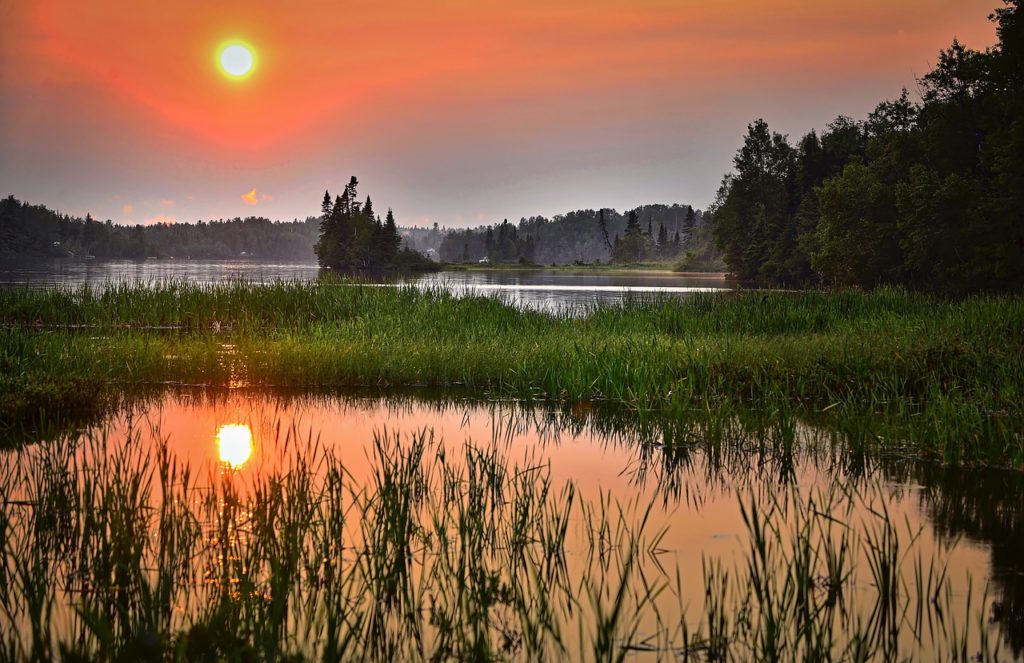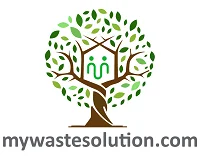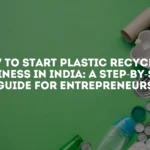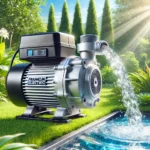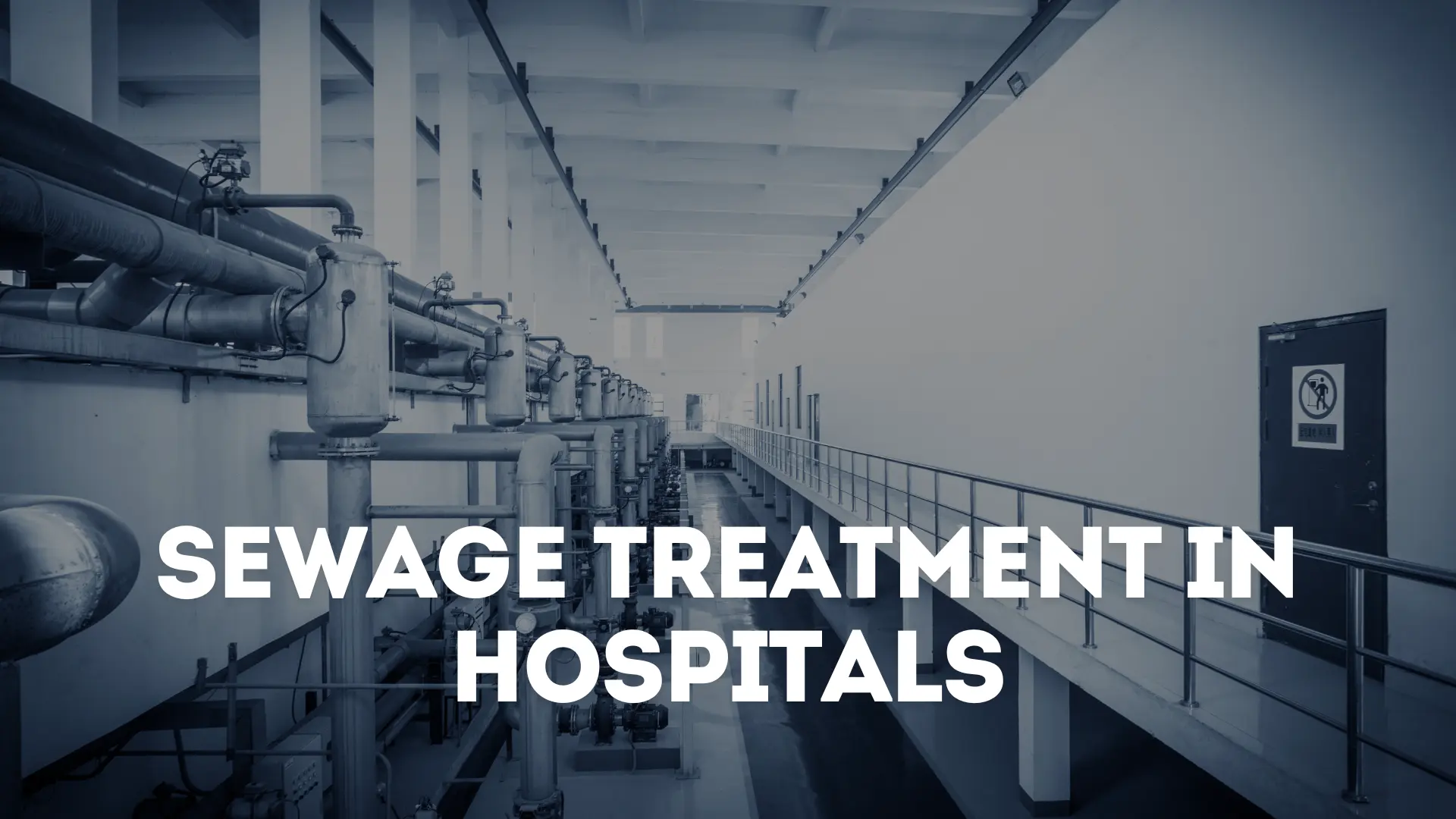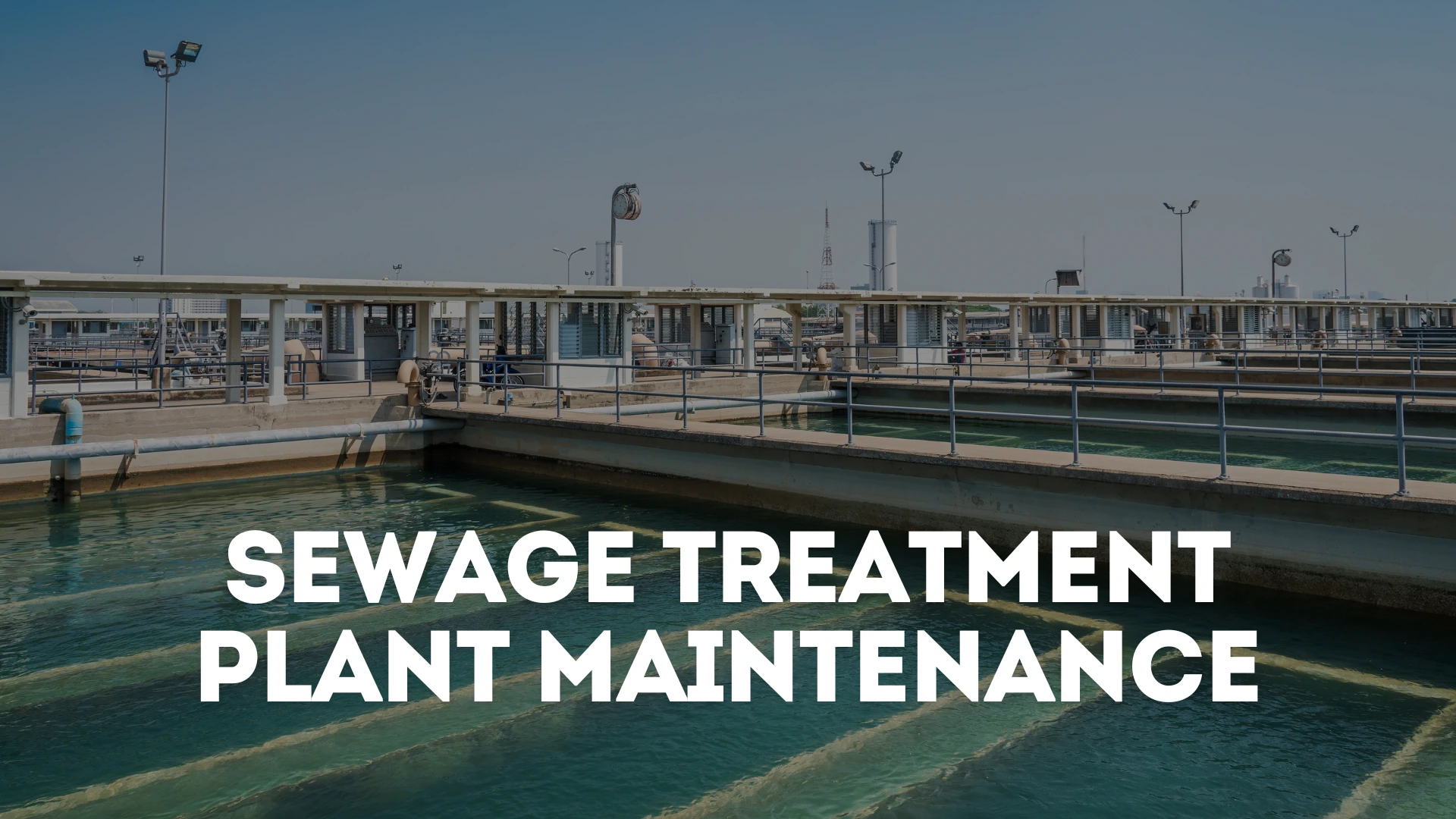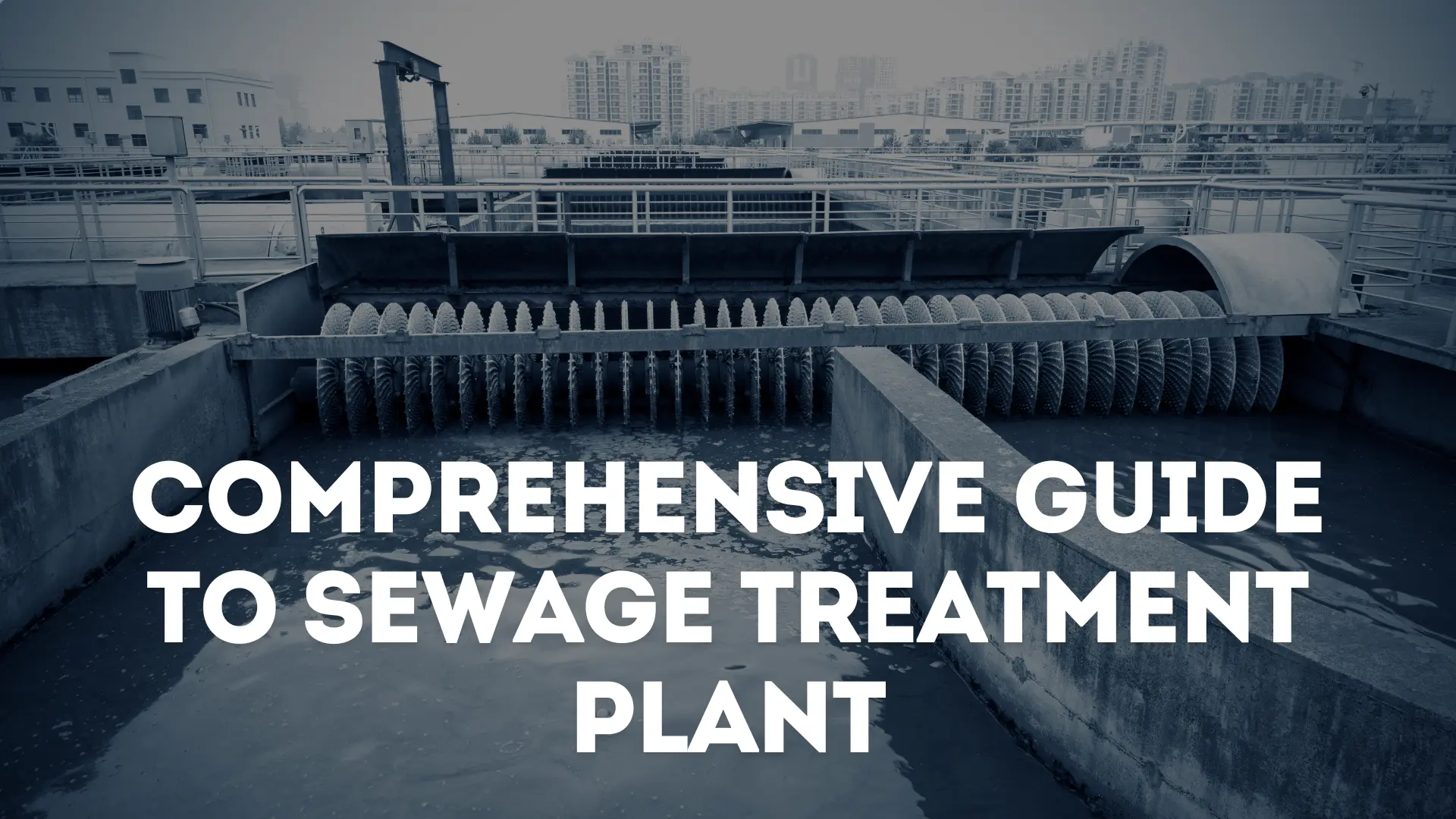Constructed wetlands for wastewater treatment is an important topic that everyone should know about. Constructed wetland is a future alternative for wastewater technology. As we are aware water scarcity has hit hard in most regions of developing countries like India. With the emergence of new concepts in urban development such as Smart City in India, application of Decentralised Wastewater Treatment System (DWTS) like constructed wetland can help restrain this problem. Treated wastewater can further be reused for non potable purposes. Subsequently reducing load on freshwater sources. In this blog you will learn about the constructed wetlands for wastewater treatment and water quality improvement by removing impurities from wastewater. You can also connect with our wastewater treatment consultants for wastewater treatment.
What is a Constructed Wetland?
Constructed wetlands for wastewater treatment plays a very important role in urban planning. A constructed wetland is an artificial wastewater treatment system that improves the effectiveness of processes. These processes help to purify wastewater similar to naturally occurring wetlands. Constructed wetlands use water, aquatic plants (Typha angustifolia, Phragmites australis, Lemnoideae), microorganisms and filter bed (usually of sand, soils and/or gravel) to improve wastewater quality.
As we know sewage treatment requires large amounts of energy and chemicals to treat the waste water.There are a number of solutions to lessen the wastewater load while at the same time has net benefits like low setup cost and no electrical or mechanical energy required for the wastewater treatment process. One of them is constructed wetland systems for homes, communities and industrial sectors that are efficient in both performance and energy requirements. The economic and environmental benefits of constructed wetlands systems for small scale use are recognized in chemical and odour free treatment i.e. Subsurface flow constructed wetland, creation of habitat, low setup and maintenance costs of the system as well as other natural benefits of constructed wetlands. Connect with our sewage waste consultants for sewage treatment.
Components of Constructed Wetland
Constructed wetland has few components which play a very important role in treatment of wastewater. Constructed wetland is a system that puts different units conjointly that work together to ensure that it removes contaminants from wastewater effectively. Constructed wetland systems need to be designed properly. That contains a constructed basin that holds water, bed media that provides filtration pathways and habitat media for the micro-organisms. Most importantly, constructed wetlands also hold vegetation that provide a substrate for microorganisms; which is the most important element in constructed wetlands for removal of contaminants from wastewater, whose nature depends on the purification role and efficiency. It should be understood that the efficiency of the constructed wetlands in waste treatment depends on the interaction and maintenance of these components. These components are discussed below in detail. Following are essential components of constructed wetlands:
- Wetland Influent Water
- Substrate (Bed Media)
- Vegetation
Now before going into details of Constructed wetlands for wastewater treatment, let’s discuss the these components of constructed wetlands:
Explore Wastewater Treatment Solutions
Find top machinery, plants, tools, resources, companies, and consultancy for comprehensive industrial Wastewater Treatment needs.
Wetland Influent Water
Influent wastewater that enters into constructed wetland can be domestic, industrial, storm water or agriculture. In many countries, constructed wetlands are used as secondary treatment for domestic wastewater. The main contaminants that should be removed from wastewater are BOD (Biochemical Oxygen Demand), COD (Chemical Oxygen Demand), organic and inorganic matter, suspended solids, TKN (Total Kjeldahl Nitrogen), Phosphorus, pathogens. Biodegradable matter can be removed by bacteria i.e. by decomposing them and inorganic matter like phosphorus should be removed by chemicals coprecipitation with iron, aluminium and calcium compounds that present in soil. The recommended BOD loading rate is 60 kg/ha.d i.e 0.006kg/m2.d. It must be maintained so that the oxygen demand of the applied wastewater does not exceed the oxygen transfer capacity of vegetation. A BOD level of 1-2 mg/L after treatment is considered very good. The wastewater from industry that enters into wetland its temperature does not exceed 32.2˚C and pH between 6.0 to 8.5.
Substrate (Bed Media)
Bed media includes soil, gravel, rock, sand and compost (organic material). The substrate and sediments have numerous functions that are beneficial to efficiency of constructed wetlands. Substrate layer provides nutrients and support for the root zone of vegetation. The bioremediation and denitrification processes are performed in bed media. Influent water flows through this layer. Particles of soil minerals are colloids having large specific surface area (total surface area per unit of mass) that influences soil adsorption properties. The physical and chemical properties of soil affect the treatment efficiency of constructed wetlands. These properties are size of particles, minerals in soil, organic matter, pore spaces, hydraulic conductivity (permeability), specific surface area, pH and temperature. Wetlands should have low permeable soil surfaces because percolation losses through bed media are minimised. Above the substrate layer lies the ground that is vegetative layer.
Vegetation
Vegetation is a vital component of constructed wetlands. Most commonly used vegetation in constructed wetland are Typha angustifolia, Phragmites australis, different types of grass and Bulrush. Constructed wetlands work with aquatic vascular plants like angiosperms and fern, aquatic mosses and algae. Photosynthesis process by algae increases dissolved oxygen (DO) content in wastewater i.e. means creates aerobic conditions in constructed wetland that DO consumed by microorganisms for decomposition of organic matter present in wastewater. The vegetated systems showed significantly greater removal efficiencies for BOD. Halophytes are vegetation types used to treat salty water. Halophytes are well adapted under high salinity wastewater. So, the efficiency of constructed wetlands using halophytes for treating salty water can be maximised. Water hyacinth is also used in constructed wetlands. Water hyacinth is a perennial freshwater aquatic plant which floats on water and also treats wastewater. Height of Water hyacinth is between 0.5-1.2m and it is spread laterally. Air through steam reaches the root which maintains aerobic condition. Roots of water hyacinth provide surface area to treat wastewater.
Struggling with Wastewater issues? Connect with top consultants specialising in Wastewater Treatment.
Connect NowClassification of Constructed Wetlands
Now let’s have a look at classification of constructed wetlands according to its function. Basically there are two major types of constructed wetlands which are:
- Free Water Surface Constructed Wetlands (FWS CW)
- Subsurface Flow Constructed Wetlands (SSF CW)
Free Water Surface Constructed Wetlands
In free water surface constructed wetlands consist of basins, with soil or another suitable medium to support the vegetation and water at shallow depth flowing through the components. Water flows above a substrate medium, thus creating a free water surface and a water depth of a few centimetres. The influent wastewater flows through the media, comes into contact with the micro-organisms, soil particles and plant roots, leading to a series of physical, chemical and biological processes, which contribute to the degradation of organic and inorganic matter and removal of pollutants from wastewater that improve quality of water. As influent wastewater slowly flows through the wetland media, organisms and plants consume nutrients that are present in wastewater for their metabolic activity.
The water level in System is maintained with an appropriate outlet control arrangement. Because of the open water surface, there is a risk of mosquito breeding if the system is not properly designed. The use of FWS CW systems is more common in most of the countries. Used almost exclusively for municipal wastewater treatment. Plants grown on the wetland may be used for composting and the effluent can be used for aquaculture and irrigation purposes. This system can be installed for small sections of urban areas (i.e. Decentralised Wastewater Treatment System for a small community or housings or small scale industries) or even appropriate for semi-urban and rural communities.
Let’s have look at merits and demerits of FWS CW are as follows:
Advantages of Free Water Surface Constructed Wetlands
There are many benefits of a free water surface constructed wetlands in wastewater treatment. Let’s see the benefits you get if you have a FWS CW for your residential buildings or for your community.
- Low operating costs
- No electrical energy is required
- Can be built with locally available materials
- Aesthetically pleasing
- Provides animal habitat
- High reduction of BOD and suspended solids
- Moderate pathogen removal
- No chemical required for treatment process
- System can be combined with aquaculture
Disadvantages of Free Water Surface Constructed Wetlands
As there are merits of FWS CW there are also few demerits of it that everyone should keep in mind while designing or installing FWS CW.
- Requires a large land area for setup
- Risk of mosquito breeding
- Requires supervision
- Not very tolerant to cold climates
- Requires expert for system design and construction
Subsurface Flow Constructed Wetlands
In SSF CW the water flows through inside a porous bed media. The subsurface flow constructed wetland also consists of a basin with a barrier to prevent seepage; the bed contains a suitable depth of porous media. As we know rock or gravel are the most commonly used media types in constructed wetlands. Gravel bed is lined with an impervious membrane. It helps to prevent contaminated water from infiltrating into the soil. Subsurface flow constructed wetlands uses a media for wastewater filtration, supports vegetation that utilise nutrients from the wastewater and serves as sites for the growth of bacteria that remove pollutants. There is no issue of odour and hazard of human contact with contaminated water is eliminated because water level in the bed will remain below the top of the rock or gravel media.
Depending on the direction of the flow path of water, there are two types of subsurface flow constructed wetland. The first one is the horizontal subsurface flow constructed wetlands (HSSF CW). The second type is the vertical subsurface flow constructed wetlands (VSSF CW). Both of these types are effective in treatment of wastewater leading to secondary effluent quality (BOD and TSS < 30 mg/L).
Now, let’s discuss sub types of Subsurface Flow Constructed Wetlands:
Horizontal Subsurface Flow Constructed Wetlands (HSSF CW)
Horizontal subsurface flow constructed wetland name itself tells us about its basic characteristics and flow mechanism. In HSSF CW wastewater flows horizontally along the bed below the substrate surface through the pores of media and plant roots, where media filters out particles and microorganisms degrade organic matter present in wastewater. Thus, health risk for wildlife habitat and humans is reduced and mosquito breeding is eliminated. Difference with FWS CW is that there is no water surface exposed to the atmosphere. The presence of plant roots and porous media favours the development of the biofilm, which enhances the removal of organic matter (OM) and Suspended Solids, while nutrients (N and P) removal efficiency is low.
If the system is properly designed then no surface flow is visible. So, depth of the substrate media varies between 30 to 80cm. The water level is maintained about 5–15 cm below the top of the substrate with a proper outlet mechanism. A small slope at the bottom of 1 to 3% is applied for gravitational water flow. For designing and installation of HSSF CW requires expert knowledge. HSSF CW are inexpensive to build where land is affordable. It is used for secondary or tertiary treatment of wastewater. Effluent from constructed wetland can be used for aquaculture or irrigation or safely discharged into water bodies. HSSF CW systems are effective in municipal wastewater treatment.
Advantages of Horizontal Subsurface Flow Constructed Wetlands
- Does not have the mosquito breeding
- High reduction of suspended solids, BOD and pathogens
- Utilisation of natural processes
- Can be built with locally available materials
- Low operation and maintenance cost
- No electrical energy is required
Disadvantages of Horizontal Subsurface Flow Constructed Wetlands
- Require large land area
- Do not remove nutrients effectively (N and P)
- Risk of clogging
- Not very tolerant to cold climates
Vertical Subsurface Flow Constructed Wetlands (VSSF CW)
The influent water in the system flows vertically downward through the filter media to the bottom of the basin where it is collected. Important difference between a HSSF CW and VSSF CW is not only the direction of the flow path, but also the aerobic conditions. Wastewater is treated by a combination of biological and physical processes. To design a vertical flow constructed wetland, expert knowledge is recommended. VSSF CW setup includes a filter media filled with gravel or sand layers with increasing gradation with depth. The depth of the bed varies from 0.45 to 1.20m and the bottom of the bed has a small slope of 1 to 2%, which allows collection of treated water and drainage out of the unit.
Phragmites australis as a vegetation are often used and planted at the top of the bed. The main advantage of VSSF CW systems is their higher OTC (Oxygen Transfer Capacity). VSSF CW requires a smaller land area for system setup compared to HSSF CW. The wastewater is applied in large batches on the bed surface which floods the entire surface of the bed creating for a short time water ponding of 3 to 5cm and allowing percolating vertically by gravity through the porous media. With this mode of operation the wastewater spreads on the entire surface and moves downward by gravity. This mechanism pushes out the trapped air and sucks fresh air into the bed that enhances aeration in the system. VSSF CW is mainly used for domestic and municipal wastewater treatment. Wastewater with high ammonia concentration can be treated using VSSF CW due to increased nitrification capacity.
Advantages of Vertical Subsurface Flow Constructed Wetlands
- Less clogging
- Does not have mosquito problems
- Better nitrification due to good oxygen transfer
- Requires less land area than a FWS CW and HSSF CW
- Higher oxygen transfer capacity
Disadvantages of Vertical Subsurface Flow Constructed Wetlands
- Requires frequent maintenance than a HSSF CW
- Source of electrical energy may be required
- Not all components of system may be locally available
- Pre treatment of wastewater is required to prevent clogging
Find and connect with leading companies specialising in Wastewater Treatment solutions.
Get Connected Today
Design Considerations in Constructed Wetland
We have discussed classification of constructed wetlands according to their flow and water level in the system and advantages and disadvantages of constructed wetlands. Now let’s discuss design parameters that everyone should keep in mind while designing constructed wetlands.
Implementation of constructed wetland involves choice of vegetation, type of wastewater, site choice, Hydraulic Loading Rate (HLR), Hydraulic Retention Time (HRT), depth of water in system, material used in substrate media and feeding mode of influent wastewater.
Some specific factors like substratum quality, plant quality, water depth, HLR, HRT may be responsible for creating a successful constructed wetland including care of the system.
Vegetation Choice in Constructed Wetland
As we discussed how vegetation plays a very important role in the constructed wetlands treatment process. Now, here we are going to learn about what type of plants we can use in constructed wetland and its maximise efficiency of constructed wetland.
In constructed wetland treatment processes involve developing plants, floating leaved plants, free-floating plants and waterlogged plants. Over one hundred fifty Varieties of macrophytes have already been utilised in constructed wetlands worldwide. Very widely utilised evolving plant varieties are cattails (Typha), reeds (Phragmites communis), rushes (Juncus spp.), bulrushes (Scirpus) and sedges (Carex). Rapidly growing plants are the major vegetation in constructed wetlands for wastewater management. Typha latifolia and Phragmites australis are the very common varieties that are planted in the system.
Many Constructed wetlands worldwide use OFP (Ornamental Flowering Plants) for the removal of pollutants from various types of wastewater most to least frequently used: Iris spp., Heliconia spp., Zantedeschia spp. and Canna spp. Various studies observed that the severe wastewater can exceed plant resistance and reduce the capacity for plant survival. Especially when vegetation resisting heavy wastewater means purifying wastewater that contains harmful contaminants, Constructed wetland could barely perform efficiently due to decreased plant survival. Environmental changes may also affect wetland vegetation like change in season. Plants like Typha will not survive in very hot climates. So we need to take special care of this plant in the summer season.
Substrate Choice in Constructed Wetlands
Substrates can eliminate pollutants from wastewater by exchange, adsorption and precipitation with ions present in media. Provide a growth medium for plants and also enable wastewater movement in the system. Can perform a major role in removing nutrients like phosphorus and nitrogen. Substrates assessed on the basis of permeability and the absorption potential of contaminants. Weak permeability would occur blockage in the system, reducing performance of process and may also impact constructed wetlands long term pollutants removal efficiency. Media materials like sand, gravel as well as rock are the weak applicants for long term phosphorus removal, but they have better hydraulic permeability and phosphorus breakup capability. Artificial and industrial products can be used as alternate substrates in constructed wetlands. Substrates like alum sludge, peat, maerl, compost and rice husk maximise the extraction of nitrogen and organic matter from constructed wetland. A combination of substrates like sand and dolomite can be used to maximise removal of phosphate.
Water Depth
Depth of water is a key variable in deciding which plant varieties are to be used. It also affects the biochemical processes which are responsible for eliminating pollutants from the system. Water depth also influences dissolved oxygen rate in constructed wetlands. Water depth should be 0.27 m if the media bed is 0.5m deep for Subsurface flow constructed wetlands. Studies showed that beds with a water depth of 0.27m increased removal efficiency of constructed wetland for COD (chemical oxygen demand), BOD (biochemical oxygen demand), ammonia and phosphorus. water is within 2 inches of the top of the gravel for free water surface constructed wetland.
Hydraulic Loading Rate (HLR) and Hydraulic Retention Time (HRT)
Hydrology is one of the main factors which influence constructed wetlands treatments processes in constructed wetlands and achieve treatment efficiency and also control flow rate in the system. The optimum HLR and HRT i.e. contact time of wastewater with system components, can perform a major role in the effectiveness of elimination of pollutants from constructed wetlands. Larger HLR leads to faster transfer of influent wastewater by the media that decrease the optimal time of contact with system components. On the other hand, a suitable microorganism in constructed wetland can be formed and have enough contact time to remove pollutants from wastewater at a long HRT. Shorter HRT in constructed wetlands can be correlated with insufficient wastewater treatment processes like denitrification and removal of nitrogen needs long HRT as compared to that required for organic matter degradation. That’s why hydrology of the system should be kept in mind while draining influent wastewater into the system.
Mode of Convey Influent Wastewater into system
Feeding mode in constructed wetlands is a very important variable which is responsible for increasing or decreasing pollutants removal efficiency of the system. Feeding mode can be continuous, batch or intermittent. Variation in it can affect oxygen transfer as well as diffusion in constructed wetland that change efficiency of treatment processes. Batch mode feeding can get better pollutants removal efficiency than continuous mode because it provides larger HRT. Batch flow mode feeding has greater ammonium removal as compared to continuous mode feed. Intermittent mode feeding can improve elimination of organic matter and nitrogen. In continuous mode feeding sulphate removal is larger than in Intermittent mode feeding.

Explore the Best Wastewater Treatment Machinery and Plants for your Industrial Needs.
Connect TodayEmerging Concepts in Constructed Wetlands
A Constructed wetland is a low energy consuming treatment system that uses natural biogeochemical processes to remove pollutants from wastewater. Unlike current high maintenance treatment systems, it is hoped that the use of constructed wetland will lead to more ecologically sustainable wastewater treatment in the future. Here we are going to discuss how constructed wetland can be modified in order to improve its efficiency for pollutants removal from wastewater. Let’s discuss new emerging technologies in constructed wetlands and learn more about application of constructed wetlands for wastewater treatment.
Hybrid Constructed Wetlands
Hybrid constructed wetlands play an important role in order to remove pollutants from wastewater. Hybrid constructed wetlands have better pollutants removal efficiency than conventional constructed wetlands. Different types of constructed wetlands combined together in various configurations to form a combined system which is known as hybrid constructed wetlands. Are used to achieve higher efficiency than single constructed wetlands.
Initial experiment on hybrid constructed wetlands was performed by Seidel in Germany in 1980. Many configurations are designed such as FWS CW and SSF CW or VSSF CW and HSSF CW. For example total nitrogen removal (nitrification/denitrification) needs aerobic/anaerobic conditions which are provided by a combination of FWS CW, VSSF CW and HSSF CW. Another type is towery hybrid constructed wetland with configuration at first and third stage is HSSF CW and at second stage three circular cells of FWS CW with various diameter which is designed for enhance nitrogen removal from domestic wastewater.
Biorack Constructed Wetlands
Biorack constructed wetland (BRCW) is a more economical, compact and clogging free alternative to conventional constructed wetlands. BRCW technology has been studied extensively in recent years with positive outcomes compared to conventional CWs. Can be installed where availability of land is less. Biorack constructed wetlands can be vegetated with Typha angustifolia and Canna indica macrophytes. In biorack constructed wetlands vertical PVC pipes arranged in rectangular configuration in the tank. Pipes provided for liquid transportation.
Bioracks involved in the treatment process by holding plants and providing an attached site for microorganisms. BRCW shows a high rate of organic matter decomposition of raw sewage at lower HRT as compared to conventional constructed wetland using Phragmites sp. BRCW is effective for wastewater with high TDS and heavy metal. BRCW is an ideal process for domestic wastewater treatment. BRCW planted with multispecies of vegetation like Typha and Canna indica shows an increase in organic matter decomposition and enhancement in DO (Dissolved Oxygen) as compared to conventional Biorack.
Floating Constructed Wetlands
Floating Constructed Wetlands (FCW) are artificial platforms that allow aquatic vegetation to grow in water. This artificial platform floats on the water body and also provides support to plants. This is a unique system that develops the potential to capture nutrients (N and P) and pollutants that harm water bodies. Floating Constructed Wetlands is a recent innovation in wastewater treatment similar to a hydroponic. Floating Constructed Wetlands designed in a way which improve pollutants removal efficiency from wastewater. Studies discovered that the cattail plants are more effective floating constructed wetlands to decompose organic matter and have more phosphorus removal efficiency. Floating constructed wetlands are a hybridization of ponds and wetlands that offer potential advantages for treatment of these highly variable wastewater flows. FCW utilise roots of emergent plants growing on a mat floating on the surface of the water rather than rooted in the soil or sediments.
The roots of plants hang below the floating mat and provide a larger surface area for biofilm i.e. attached growth systems of wastewater treatment. FCW removes pollutants such as suspended solids, organic matter, nutrients (N and P) and metals; this shows that FCW can enhance performance of pond systems and provide better performance than surface flow constructed wetlands.
Constructed Wetlands for Wastewater Treatment in India
India has an abundance of wetland systems that hold up diverse ecosystems and unique habitats but in India constructed wetlands systems were not developed as decentralised wastewater treatment systems. Constructed wetlands have a strong potential for wastewater treatment in developing countries like India, particularly by small rural communities, due to their low cost and easy maintenance. Constructed wetlands systems have not found use in India, due to lack of public awareness and expertise in developing the technology. These wetlands provide numerous ecological services but are under tremendous pressure due to industrialization, urbanisation, anthropogenic pressures, pollution from industry and households, over exploitation of natural resources and agricultural intensification decline wetlands functions they perform.
India’s first constructed wetland was installed at Sainik School, Bhubaneshwar, Orissa; planted with two types of macrophytes Typha latifolia and Phragmites karka. At present 180-200 m3/d wastewater are being treated by this wetland. The CDD Society is an NGO located in India, promotes the use of DEWATS (Decentralised Wastewater Treatment Systems) and has so far implemented more than 350 projects in South Asia, including India. Wetlands cover 4.9% of India’s area. ISRO prepared a national wetland atlas based on satellite images that mapped 2,31,195 wetlands in India during 2017-18.
There are 75 Ramsar Sites in India; these 75 sites cover an area of 13,26,677 hectares. 26 new wetland sites were declared as Ramsar Sites of India in 2022. Till now, the state of Tamil Nadu has the maximum 14 Ramsar Sites in India. A Ramsar site is a wetland site designated to be of international importance under the Ramsar Convention, also known as “The Convention on Wetlands”, an intergovernmental environmental treaty established in 1971 by UNESCO (United Nations Educational, Scientific and Cultural Organisation).
Features of Constructed Wetland
Constructed wetlands for wastewater treatment have many significant features that one should look for, such as:
- Effectively treats wastewater from household, agricultural runoff, storm water and also industry
- Uses simple technology and easy to understand
- Require low energy for operations
- Contributes to environmental protection by providing a habitat for plants and animals
- Act as water storage reservoir
- Maintain groundwater and surface water levels
- Provide water for reuse
- Cost efficient in terms of construction, operations and maintenance
- Training and research ground for researchers and educational institutions
- Create natural aesthetic view
FAQs
Q1. What is the constructed wetland system?
Answer- Constructed wetlands is a wastewater treatment system that uses natural components like vegetation, soils and microorganisms to improve water quality.
Q2. What are the benefits of constructed wetlands?
Answer- There are many benefits of constructed wetlands if you have it. Some of them are less expensive compared to other treatment systems, natural processes, no need to add any external chemicals in the system, low operational and maintenance costs, provide habitat for wetland organisms and constructed wetland are aesthetically pleasing.
Q3. What are applications of constructed wetland for wastewater treatment?
Answer- Constructed wetlands can treat household wastewater, industrial wastewater, agricultural wastewaters, landfill leachate and stormwater runoff. Even wastewater from vinary can be treated with constructed wetland.
Q4. Do constructed wetlands be used for stormwater management?
Answer- Yes, constructed wetlands can be used to treat urban stormwater runoff.
Q5. What are the elements of constructed wetlands?
Answer- Elements included in constructed wetland are Impermeable layer of soil, Substrate layer made of gravel or sand and vegetation.
Q6. What are types of constructed wetlands?
Answer- Basically constructed wetlands divide on the basis of water flow in the system. There are two major types of constructed wetlands which are Free Water Surface Constructed Wetlands (FWS CW) and Subsurface Flow Constructed Wetlands (SSF CW). SSF CW further divided into sub types which are Horizontal Subsurface Flow Constructed Wetlands (HSSF CW) and Vertical Subsurface Flow Constructed Wetlands (VSSF CW).
Q7. Are there constructed wetlands for industrial wastewater treatment?
Answer- Yes, constructed wetlands can be used to treat wastewater from industry but primary treatment requires removal of higher concentration of pollutants because vegetation in the system sometimes is not able to tackle these pollutants.
Q8. Are constructed wetlands used for water quality improvement?
Answer- Yes, constructed wetlands use natural elements and processes to improve water quality.
Q9. What are the problems associated with Constructed Wetlands?
Answer- However, there are few problems found in practical application of constructed wetland. They are vulnerable to changes in temperature (vegetation), substrates are easily saturated and plugged, they occupy large surface area, constructed wetland performance can be affected by change in climate condition and also which kind of vegetation we use in the system also decides performance of constructed wetlands.
Q10. What is the use of treated water from constructed wetlands?
Answer- Treated water can be used for aquaculture and irrigation purposes or simple drain into natural water bodies.
Q11. Can treated water from constructed wetland be used for drinking purposes?
Answer- No. Because effluent water from constructed wetland still contains contaminants in less concentration than was before which are harmful to the human body so further purification treatment required like disinfection to eliminate pathogens from effluent water from constructed wetland.
